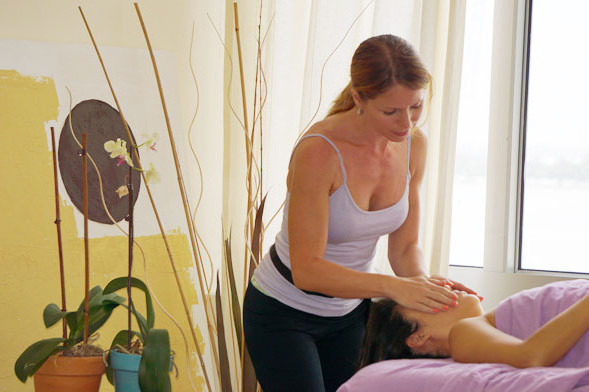
01 Feb Energy Healing Therapy: Reiki Therapy 101
Reiki, used all over the world by people of many different faiths, cultures, and spiritual path, is a healing technique that was developed by the Japanese Buddhist Mikao Usui, in 1922. “Rei” is defined as the all-knowing divine universal, and “Ki” is the energy that flows through everything that is alive (including plants, animals, and humans).
I was introduced to Reiki while in medical when I was the national student representative and first sub-intern for the globally renown Dr. Andrew Weil, founder of the University of Arizona Center for Integrative Medicine. I was also a patient of Reiki Healing when I was recovering from chronic vertigo and found this therapy highly beneficial.
What is Reiki?
Reiki is an energy healing modality based on the principle that the therapist can channel energy into the patient by means of touch, to activate the natural healing processes of the patient’s body, in order to rebalance and clear blockages in the chakras or energy centers to restore physical and emotional well-being.
The reason why Reiki can be effective is because it infuses the patient’s chakras and body with the energy of the universe. In theory, the body takes exactly what it needs at that point in time, and the Reiki practitioner’s role is to act as a channel of universal energy to help facilitate that healing so that the body can heal itself. When the practitioner directs Reiki into areas of the body that are energetically or physically weak, the healing process can begin as your body allows itself to fully release.
What should I expect during a Reiki session?
Although different Reiki practitioners may have their own way of conducting a Reiki session, most initial sessions start with a consultation to build a connection between practitioner and patient and to help the practitioner learn what the patient would like to address during the session.
After the consultation/assessment, the client is usually laying on a massage table but treatments can also be given while the client is seated or even standing. The client remains fully clothed. The practitioner places her/his hands on or near the client’s body in a series of hand positions (these include positions around the head and shoulders, the stomach, and feet). Each position is held for three to ten minutes depending on how much Reiki the client needs at each position. The whole treatment usually lasts between 45 and 90 minutes.
During the Reiki session, which is a full body experience, I felt warmth traveling of energy throughout my body. Most patients will simply feel total relaxation. Some people who are more visual may experience colors or visuals. Others may take a nap.
What can be treated with Reiki?
Reiki has had a positive effect on all forms of illness and negative conditions. This includes minor things like head or stomach aches, bee stings, colds, flu, tension, and anxiety, as well as serious illness like heart disease, cancer, leukemia, etc. Reiki can be used to subside side effects of western medical treatments. This includes the negative effects of chemotherapy, post-operative pain and depression as well as improving the healing rate and reducing the time needed to stay in the hospital. Stress reduction with some improvement in one’s physical and psychological condition are what most clients will experience.
How do I choose a Reiki practitioner?
Just like any other profession, there are great Reiki practitioners and not-so-great Reiki practitioners. When you’re dealing with energy work, it’s important to find a practitioner with whom you resonate with. Make sure you do your due diligence and research. It would also be helpful to check out their testimonials if they’re available, and read their Yelp profiles and reviews, if they have them. But when it really comes down to it, find a practitioner with whom you fell trust and feel comfortable with.
Namaste, Dr. Laura

